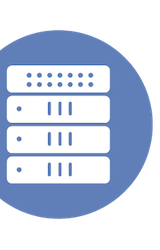Symantec Presents at Tech Field Day 8
Event: Tech Field Day 8
Appearance: Symantec Presents at Tech Field Day 8
Company: Symantec
Video Links:
Personnel: Don Angspatt, Jerry Gallin, Oscar Wahlberg, Ranga Rajagopalan, Saveen Pakala
At Tech Field Day 8, Symantec presented a comprehensive update on its Storage and Availability Management portfolio. Featuring the soon-to-be-released 6.0 version of Storage Foundation and Veritas Cluster Server, the focus was on supporting private cloud adoption, enhancing resiliency in multi-tiered applications, and delivering improved storage optimization. The event showcased new technologies geared toward helping enterprises transform their existing infrastructure into more agile, efficient, and resilient platforms for mission-critical applications.
During the presentation, Symantec executives and product managers emphasized the strategic importance of getting “the private cloud you want from the infrastructure you’ve already got.” This message was demonstrated through a series of sessions and live demos highlighting new features in version 6.0. These included file system-level deduplication and compression for primary storage, automation of recovery for multi-tier applications using Virtual Business Services (VBS), fast failover support for Windows environments, and enhanced integration between Application HA and Backup Exec for VM auto-restore. These enhancements targeted the challenges faced by enterprises amid mounting pressure to virtualize and evolve toward private cloud architectures without sacrificing the performance or stability of their mission-critical environments.
The event also included lively and candid discussions among the Tech Field Day delegates, many of whom questioned traditional enterprise assumptions embedded in Symantec’s messaging. Several attendees expressed skepticism about large-scale private cloud transitions or suggested that traditional “glass house” IT centers are no longer leading innovation. Symantec acknowledged that while cloud adoption isn’t always immediate, their solutions, like VBS and multi-platform clustering, offered practical bridges between legacy systems and modern cloud-readiness. The session concluded with strong interest in the technical depth of the demos and an open invitation to explore further, positioning Symantec’s 6.0 release as a significant step in merging enterprise reliability with the agility demanded by modern IT.







